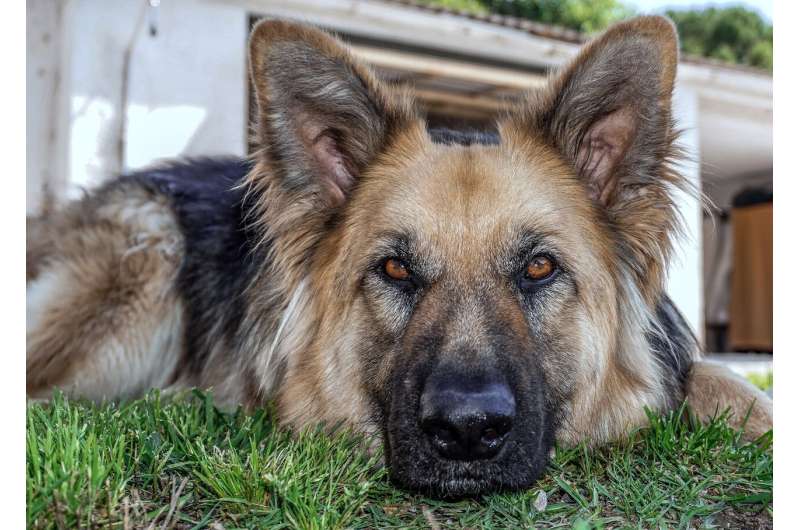September 18, 2019 report
Study suggests dog breeds with less artificial selection history behave more wolf-like

A team of researchers from the University of Pisa and the University of Milan has found evidence that shows that dog breeds with a long artificial selection history are less wolf-like in their behavior than breeds with less artificial selection. In their paper published in the journal Royal Society Open Science, the group describes behavioral experiments they conducted with three dog breeds and what they found.
Some dog breeds are more wolf-like than others. Those that are more wolf-like are more independent and more willing to work out problems on their own, rather than looking to their human masters. In this new effort, the researchers have found this to be the case with three dog breeds: Czechoslovakian wolf dogs, Labradors and German shepherds. Wolf-dogs have less artificial selection in their family tree than German shepherds, and Labradors have the most of the three breeds.
To determine behavioral differences between the breeds, the researchers enlisted the assistance of 56 dog volunteers. Each was trained to tip over a cover concealing food. Those that passed the test (77 percent of them) moved on to the next stage. In the second part of the experiment, the researchers screwed the cover to the ground, making it impossible for the dogs to turn it over and eat the food. This was done to see how much the dog would turn to the humans to solve the problem for them. This was measured by timing how long each dog gazed into the eyes of the human carrying out the experiment. To reduce the chances of other factors impacting the results, the dogs were all tested in the place where they normally lived. Also, they were initially chosen for the study because of similarities in upbringing. None were trained as sheep dogs, for example, which involves a lot of eye contact between trainer and dog.
The researchers report that there were obvious differences in how long the breeds gazed at the humans—the Czechoslovakian wolf dogs gazed the shortest amount of time (less than a second) and the Labradors gazed the longest (4.5 seconds). The researchers noted that all of the dogs spent a lot of time trying to solve the problem themselves, mostly by looking at the cover and sniffing at it. The researchers claim their results show that dog breeds with less artificial selection have more wolf-like behavior than other breeds.
More information: Veronica Maglieri et al. Wolf-like or dog-like? A comparison of gazing behaviour across three dog breeds tested in their familiar environments, Royal Society Open Science (2019). DOI: 10.1098/rsos.190946
Journal information: Royal Society Open Science
© 2019 Science X Network




















